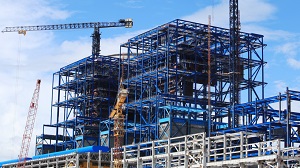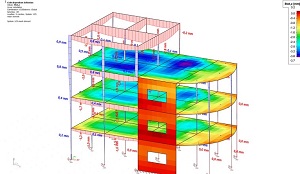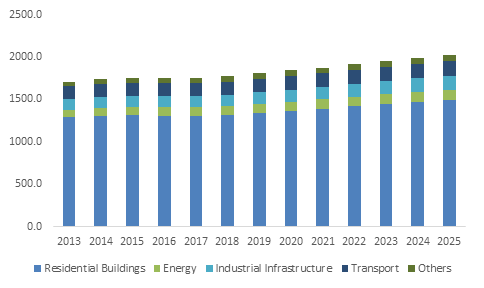civil engineering 2022
About Conference
The International Conference on Structural and Civil Engineering Research (CIVIL ENGINEERING 2022) hosted through EuroSciCon took area at Hyatt Place, Amsterdam, Netherlands all through November 23-24, 2020. It was once organized via EuroSciCon and generous response used to be obtained from the Editorial Board Members of EuroSciCon Journals as well as from eminent scientists, gifted researchers, and young scholar community. Researchers and students who attended from one of a kind parts of the world made the convention one of the most successful and productive activities in 2021 from EuroSciCon. The two-day application witnessed thought-provoking keynote and plenary presentations from professionals in the subject of Structural and Civil EngineeringResearch, highlighting the theme, "Advance Technologies in Structure and Civil Engineering".
The meeting used to be carried out through a number sessions, in which the discussions have been held on the following major scientific tracks:
- Civil Engineering and Architecture
- Steel Structures and Construction
- Earthquake Engineering and Disaster Management
- Structural Analysis and Designing
- Reinforced Concrete Structure
- Building Technology and Construction Management
- Modular Constructions
The highlights of the meeting were from the eminent keynote lectures from:
Civil Engineering 2021 Conference performed a vital role in promoting multidisciplinary interactions between Structural and Civil Engineering Research to decorate lookup in Civil Engineering. The software covered cutting-edge and emerging lookup innovations in the discipline of Civil Engineering.
We would mainly thank our Moderator for his contribution to the conference.
We definitely thank the Organizing Committee Members and the Editorial board of Civil Engineering 2021 Conference for their gracious presence and continuous aid for the duration of the lawsuits of this event. With the precious feedback and beneficent response obtained from the contributors of the event, EuroSciCon would like to announce the commencement of “International Conference on Structural and Civil Engineering Research” at some stage in
Webinar with the theme: “Engineering for Sustainable Infrastructure & Development”.
WELCOME MESSAGE
For the benefit of the Structural and Civil Engineering Research Conference 2020 Organizing Committee, we anticipate inviting you to Webinar. The world focused on the field of Civil and Structure Engineering, this is your most opportunity to accomplish the greatest gathering of individual from the overall advancement undertakings. With the members from around the globe focused on learning about recent and advanced Civil Engineering Researches.
Coordinate shows, fitting information, meet with present and potential steel merchants, make a sprinkle with another item offering, and get name affirmation at this 2 days event. Unbelievably renowned speakers, the most recent techniques, systems, and the most current updates in Structural and Civil Engineering fields are indications of this social occasion.
It will provide scope to student to meet and interact with international speakers and professors, CEOs. This meeting joins masters, researchers, analysts and understudies from all locales of Civil Engineering, Architectural, Structural Engineering and other related civil engineering affiliations, steel merchants, building and improvement specialists, Developers, Contractors, Interior Design, Consultancy, Building Material creators of national importance. The Organizing Committee ceaselessly attempts to make what we believe is a remarkable specialized program at an extraordinary esteem.
We believe you will present a theoretical displaying of your most recent research or undertaking victories, and that you will take full preferred standpoint of the specialized sessions exhibited by your associates who have as of now liberally volunteered their chance and ability. This is likewise your chance to interface with condition of-the-hone experts and to reconnect with your companions and associates. Set aside opportunity to survey the Advanced Program. You'll see that the 2020 Conference programwill offer new and improved proficient tracks, board discourses, superb keynote speakers and arranged strolling visits, among different exercises.

Much thanks to you for taking an interest in the Structural and Civil Engineering Research Conference 2020.
SESSIONS AND TRACKS
Track 1: Civil Engineering and Architecture
Civil engineering is a professional engineering discipline that deals with the outline, development, and upkeep of the physical and normally constructed condition, including works like streets, spans, trenches, dams, airplane terminals, sewerage frameworks, pipelines and railways. Civil engineering is customarily broken into various sub-disciplines. It is the second-most established designing order after military engineering, and it is characterized to recognize non-military building from military engineering. Civil engineering happens in general society division from city through to national governments, and in the private part from singular property holders through to universal organizations.

There are a number of sub-disciplines within the broad field of civil engineering. General civil engineers work closely with surveyors and specialized civil engineers to design grading, drainage, pavement, water supply, sewer service, dams, electric and communications supply. General civil engineering is also referred to as site engineering, a branch of civil engineering that primarily focuses on converting a tract of land from one usage to another. Site engineers spend time visiting project sites, meeting with stakeholders, and preparing construction plans. Civil engineers apply the principles of geotechnical engineering, structural engineering, environmental engineering, transportation engineering and construction engineering to residential, commercial, industrial and public works projects of all sizes and levels of construction.
- Pavement and drainage design
- Dam Construction
- Water supply
- Electric and communications supply
- Sewer service
Track 2: Structural and Construction Engineering
Structural engineering is concerned with the structural outline and structural examination of structures, spans, towers, flyovers (bridges), burrows, seaward structures like oil and gas fields in the ocean, aero-structure and different structures. This includes distinguishing the heaps which follow up on a structure and the powers and stresses which emerge inside that structure because of those heaps, and afterward designing the structure to effectively support and oppose those heaps. The heaps can act naturally weight of the structures, other dead load, live loads, moving (wheel) stack, wind stack, tremor stack, stack from temperature change and so forth. The structural designer must outline structures to be safe for their clients and to effectively satisfy the capacity they are intended for (to be useful). Because of the idea of some stacking conditions, sub-teaches inside structural engineering have risen, including wind engineering and seismic tremor engineering.
Design considerations will incorporate quality, firmness, and strength of the structure when subjected to loads which might be static, for example, furniture or self-weight, or dynamic, for example, wind, seismic, group or vehicle loads, or momentary, for example, transitory development loads or effect. Different considerations incorporate cost, constructability, safety, style and sustainability.
- Energy efficiency in buildings
- Green building materials
- Earthquake engineering
- Bridge engineering
- Structural health monitoring
- Special concrete
- Management of infrastructure construction
- Computational Mechanics
Track 3: Building Technology and Construction Management
The Building Technology and Construction Management division functions as a center of teaching, learning, and research in Building Physics, Concrete Technology, and Construction Management. Construction usually refers to the erection of large structures such as buildings, ship, aircraft, dams, roads, and bridges. By extension, Construction Technology Management refers to the planning, coordination and successful implementation of such structures. A branch of Civil Engineering, Construction Technologyand Management is a fusion of civil engineering and construction management which may incorporate the principles of drainage, water supply and distribution, heating and ventilation, and recycling of construction and demolition waste management.
- Computational laboratory for construction management
- Construction and contract management
- Construction engineering practices
- Construction methods and equipment
- Design of structures
- Heavy equipment operations
Track 4: Steel Structures and Construction
Structural steel is a classification of steelutilized for making development materials in an assortment of shapes. Numerous structural steel shapes appear as a lengthened bar having a profile of a particular cross segment. Structural steel shapes, sizes, synthetic arrangement, mechanical properties, for example, qualities, stockpiling rehearses, and so on, are directed by guidelines in most industrialized nations. Most structural steel shapes, for example, I-pillars, have high second snapshots of territory, which implies they are hardened in regard to their cross-sectional region and consequently can bolster a high load without inordinate hanging.

Steel Construction is the development of a metal structure created with steel for the internal support and for exterior. Advantages are there of utilizing steel are steel is cost effective, energy efficient product which does not simply warp, buckle, twist or bend, and is therefore easy to modify and offers design flexibility.
- High Performance basic steel
- Material Quality & Control
- Cold formed steel
- Non-structured steel
- Future trends in steel structures
- Advanced sustainable material
- Sustainable steel structure
- Composite construction
Track 5: Structural Analysis and Designing
Structural analysis is done by an examination of the genuine structure, on a model of the structure made on some scale, and by the use of numerical models. Tests are directed on the genuine structure when creation is expected of comparable structures in expansive amounts, similar to edges of a specific auto, or when the test costs are satisfactory because of the noteworthiness of the assignment. At the point when components of the primary structures are to be inspected, at that point models are utilized for the estimation of the diverse burdens to be persevered. Most auxiliary investigations are directed on the scientific models, in which the model could be flexible or inelastic, powers might be static or dynamic, and the model of the structure may be two dimensional or three dimensional. Structural analysis is an essential subject of structural designing that assesses the distinctive loads on structures, and their effects. It is an exact technique to learn the ability of the structures to withstand the normal loads, and help with planning the structures in like manner.

- Structures and Loads
- Classification of structures
- Analytical methods and Limitations
- Strength of materials methods
- Elasticity methods
- Methods using numerical approximation
Track 6: Structural Health Monitoring
Structural health monitoring (SHM) alludes to the way toward executing a damage detection and portrayal technique for designing structures. Here damage is characterized as changes to the material or potentially geometric properties of a structural framework, including changes to the limit conditions and framework availability, which adversely influence the framework's execution. The SHM procedure includes the perception of a framework after some time utilizing intermittently tested dynamic reaction estimations from a variety of sensors, the extraction of harm delicate highlights from these estimations, and the factual examination of these highlights to decide the present condition of framework health. For long term SHM, the yield of this procedure is intermittently refreshed data with respect to the capacity of the structure to play out its expected capacity in light of the inescapable maturing and degradation coming about because of operational conditions. After extraordinary occasions, for example, seismic tremors or impact stacking, SHM is utilized for quick condition screening and intends to give, in close constant, solid data with respect to the uprightness of the structure. Foundation investigation assumes a key job out in the open wellbeing with respect to both long haul harm amassing and post extraordinary occasion situations. As a feature of the quick improvements in information driven advances that are changing numerous fields in building and science, machine learning and PC vision methods are progressively prepared to do dependably diagnosing and arranging designs in picture information, which has clear applications in review settings.
Global civil engineering market size, by service (2013-2025):
Regulations in Europe and North America regarding volatile organic compounds (VOC) emissions during construction processes is expected to boost demand for precast/prefabricated construction products in these regions. Companies involved in civil engineering all over the world are increasingly focusing on green building products thanks to growing awareness about the importance of eco-friendly products and energy efficiency. Introduction of new materials and technologies is expected to create lucrative opportunities for players over the next few years.
Various government regulatory frameworks, such as the International Building Code (IBC), are applied to new and existing buildings in order to track and register specific infrastructure w.r.t. government processes and control illegal and unethical construction practices.
Global civil engineering market share, by application (2017) in % (percentage):
The construction sector is a key segment within the market, driven largely by booming building and construction activities in Asia Pacific and MEA. This is supported by various international companies and associated service providers investing in these regions. India, China, Saudi Arabia, UAE, and other developing countries are expected to show significant growth in infrastructuraldevelopment during the forecast period. Civil engineering is one of the most prominent and vital elements in regional development. Infrastructural development significantly depicts potential growth possibilities of any regions.MARKET ANALYSIS
The global civil engineering market size was valued at USD 7.84 trillion in 2017 and is expected to register a CAGR of 5.6% from 2018 to 2025. The market is anticipated to be driven by an expanding residential sector in the emerging economies of Asia Pacific. Rapidly rising urban population, coupled with growing need to accommodate them is a key factor boosting this market. Ongoing infrastructuraldevelopment has also favored the market, along with strict government regulations and rise in international investments in developing regions such as Asia Pacific and Middle East and Africa (MEA).


